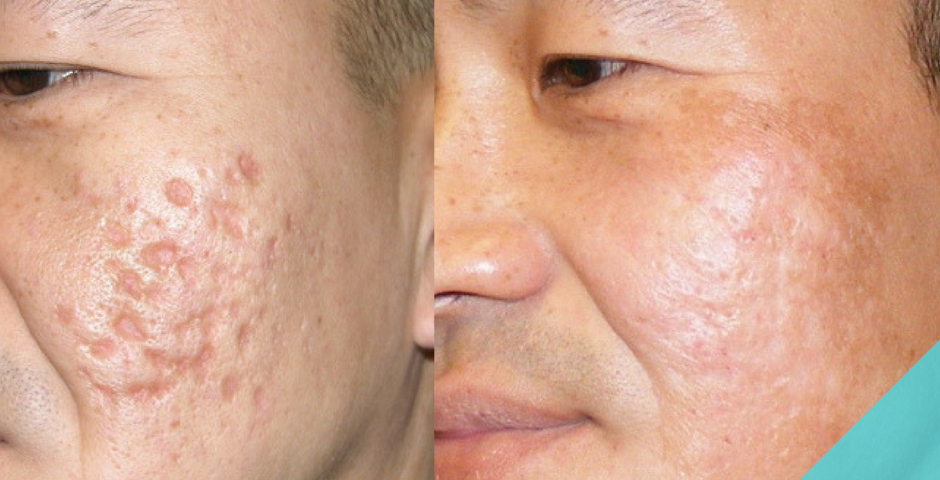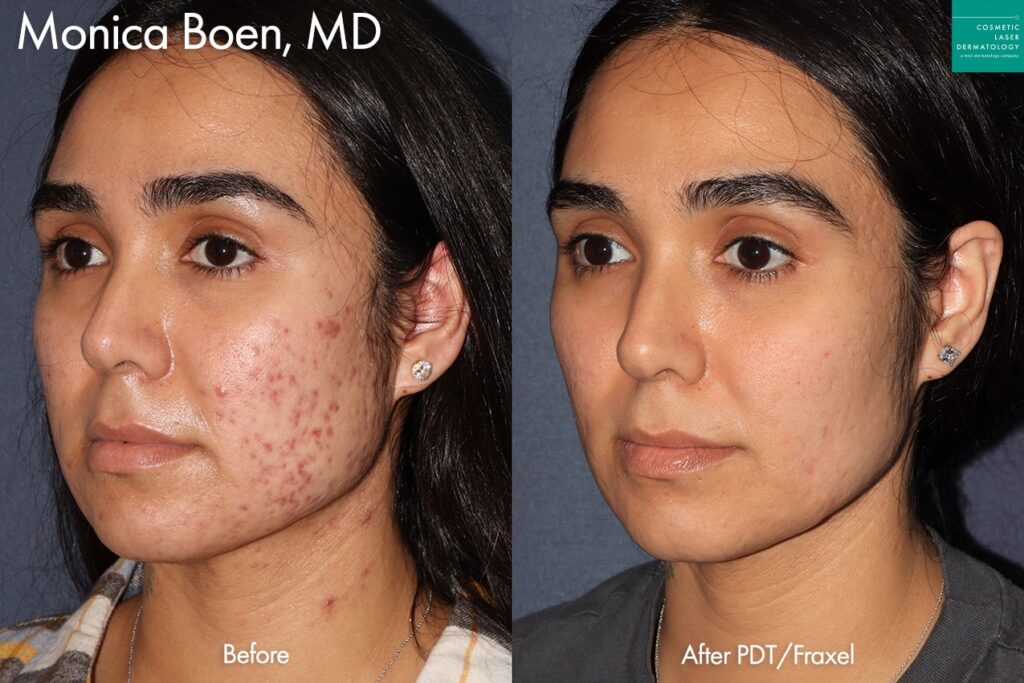Exploring Skin Disease: Determining and Dealing With Acne Scars for Healthier Skin
Acne scars represent a substantial concern for individuals seeking to maintain healthy skin, as they can influence both look and self-worth. Recognizing the numerous types of marks, from atrophic to hypertrophic, is vital for figuring out ideal treatment options. While expert treatments like chemical peels and microneedling can be reliable, the relevance of personalized care plans can not be overemphasized. Moreover, preventative measures play an important function in reducing future scarring. As we explore these elements, one have to take into consideration exactly how the best method can bring about transformative outcomes.
Understanding Acne Marks

The body's all-natural recovery process can lead to either atrophic marks, which look like depressions in the skin, or hypertrophic scars, which are increased and result from overflow of collagen. In addition, the psychological toll of acne scars must not be taken too lightly; many individuals report sensations of shame, stress and anxiety, and decreased self-esteem. This emotional concern can impact social communications and overall high quality of life.
Addressing acne scars calls for a comprehensive understanding of their formation and effect. Understanding of the capacity for lasting effects associated with untreated scars can encourage individuals to seek ideal therapies. Early treatment and reliable monitoring strategies can significantly improve skin look and boost emotional strength, stressing the relevance of recognizing the intricacies bordering acne marks.
Sorts Of Acne Marks
Acne marks can be categorized into distinct kinds, each showing special attributes and calling for certain therapy techniques. acne scars treatment. The main kinds of acne scars consist of atrophic, hypertrophic, and keloid marks

Hypertrophic scars, on the other hand, are elevated above the skin degree and are the outcome of extreme collagen manufacturing during the healing procedure. They commonly remain within the limits of the initial acne sore. Keloid marks are similar yet extend beyond the initial injury website, forming larger, increased locations that can be itchy or agonizing.
Comprehending these sorts of scars is vital for picking ideal treatment options. Various scars may respond much better to specific therapies, such as laser treatments, fillers, or surgical interventions, highlighting the relevance of a tailored technique to acne mark monitoring.
Recognizing Your Scars
When reviewing the appearance of your skin, it is crucial to properly identify the sort of scars present, as this will certainly notify one of the most effective therapy strategy. Acne marks typically come under two groups: atrophic and hypertrophic scars. Atrophic marks, which are the most typical, appear as anxieties or indentations on the skin. These can additionally be categorized into ice-pick marks, boxcar scars, and rolling marks, each exhibiting distinct features and needing various approaches for evaluation.
Hypertrophic marks, on the various other hand, are raised and occur due to extreme collagen production during the healing procedure. Recognizing the specific features of your scars-- such as depth, width, and structure-- is crucial for proper identification (acne treatment for sensitive skin). Furthermore, think about the distribution of scars across your skin, as this can indicate the severity and period of the acne problem
Involving with a skin doctor can supply useful insights into the nature of your scars, assisting in the distinction in between different types. An extensive understanding of your scars will ultimately lead to a more customized and efficient treatment strategy, making certain a more clear and healthier skin tone.
Therapy Choices Available
Determining the particular sort of acne marks existing on your skin prepares for exploring reliable therapy options. Usual kinds of acne scars consist of atrophic (depressed), hypertrophic (raised), and post-inflammatory erythema.
For atrophic marks, alternatives such as chemical peels, microneedling, and laser resurfacing are extensively utilized. Chemical peels off use acids to remove the external layer of skin, promoting brand-new cell growth. Microneedling includes tiny needles that create micro-injuries, stimulating collagen manufacturing. Laser resurfacing targets damaged skin cells, go to website boosting structure and tone.
Hypertrophic scars can be treated with corticosteroid shots to flatten the mark or laser treatment to minimize inflammation and enhance appearance. Silicone gel sheets and pressure dressings may additionally help in managing increased marks.
Additionally, facial fillers can briefly complete depressions from atrophic marks, while surgical excision may be suitable for extreme situations. Each therapy choice has its considerations and benefits, making it vital to seek advice from with a skin doctor. They can offer tailored suggestions based upon the type and extent of your marks, along with your skin kind and overall health and wellness.
Tips for Avoidance
Reliable prevention techniques can substantially minimize the possibility of creating acne marks. Utilizing non-comedogenic products helps prevent clogged pores, which can aggravate acne.
Staying clear of the impulse to pop or choose acne lesions is vital, as this can cause deeper skin damage and boost the danger of scarring. Instead, think about using a cold compress or over the counter therapies to lower swelling and read the article inflammation.
Sun protection is another crucial element of prevention; ultraviolet (UV) rays can dim marks and prevent the recovery process. Applying a broad-spectrum sun block with at the very least SPF 30 daily can safeguard the skin and promote also healing.
Lastly, keeping a balanced diet plan rich in vitamins, anti-oxidants, and minerals sustains skin health and wellness and recovery. Remaining moisturized and managing stress degrees can also play a significant function in reducing acne flare-ups. By applying these techniques, people can substantially lessen their possibilities of creating acne scars.
Verdict
In conclusion, understanding and identifying acne scars is vital for efficient therapy and attaining much healthier skin. Various types of acne scars, including atrophic and hypertrophic scars, demand certain treatments tailored to private demands.
The body's all-natural recovery procedure can result in either atrophic marks, which appear as depressions in the skin, or hypertrophic marks, which are increased and result from overflow of collagen. They are more separated right into 3 subtypes: ice choice marks, boxcar marks, and rolling scars. Acne scars typically fall into two categories: atrophic and hypertrophic scars. These can even more be classified into ice-pick scars, boxcar scars, and rolling marks, each description exhibiting distinct qualities and requiring different approaches for analysis.
Various types of acne marks, consisting of atrophic and hypertrophic scars, necessitate specific treatments customized to private needs.